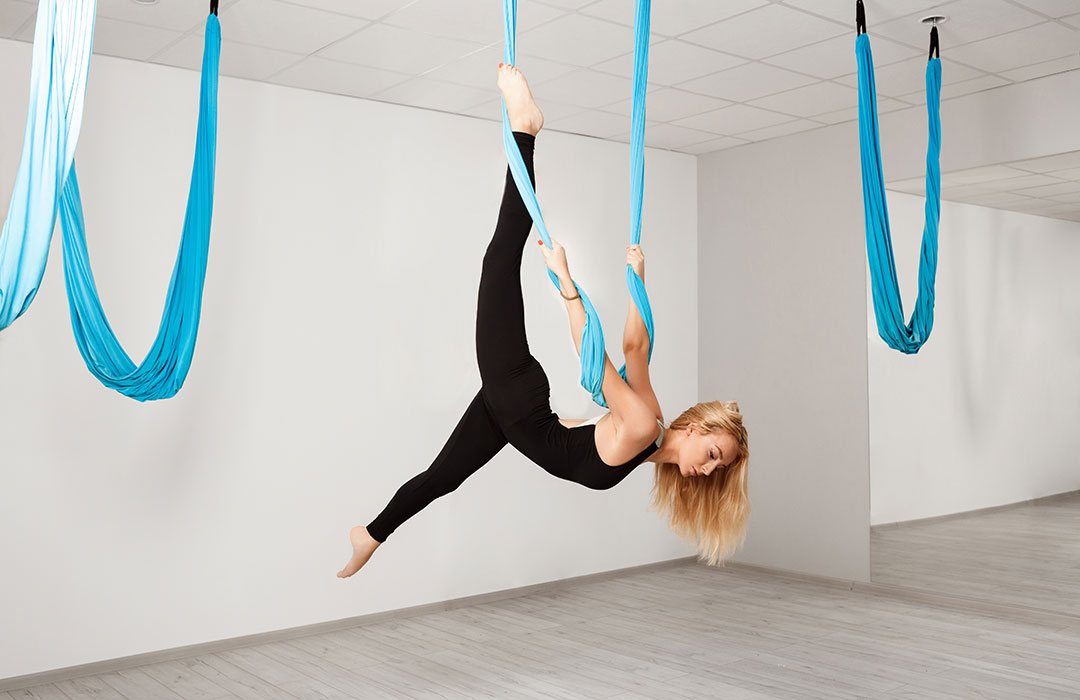Are you tired of the same old squat routine and looking for a new challenge that will help you build stronger legs and core? Look no further than the kneeling squat. This powerful exercise is a game-changer for improving their lower body strength and stability. But mastering the kneeling squat requires more than just dropping down on your knees and standing back up. It takes proper form, technique, and a comprehensive understanding of engaging your core and activating your glutes. In this complete guide to mastering the kneeling squat, we’ll walk you through every step, from proper form and technique to advanced variations that will challenge even the most experienced fitness enthusiasts. Whether a beginner or an experienced athlete, this guide has everything you need to take your leg and core strength to the next level and achieve your fitness goals.
Benefits of the Kneeling Squat
The kneeling squat is a highly effective exercise that can help you build strength and stability in your legs and core. Here are some of the key benefits of including the kneeling squat in your workout routine:
1. Targets multiple muscle groups
The kneeling squat is a compound exercise that targets multiple muscle groups at once, including your quads, hamstrings, glutes, and core. You can build strength and endurance more quickly and efficiently by engaging multiple muscle groups simultaneously.
2. Builds lower body strength and stability
The kneeling squat is a great exercise for building lower body strength and stability. By working your quads, hamstrings, and glutes, you can improve your overall leg strength and stability, which can help you perform better in other exercises and activities.
3. Improves posture and balance
The kneeling squat also helps improve your posture and balance. By engaging your core and keeping your spine straight, you can improve your overall posture and balance, which can help you perform better in other exercises and activities.
Muscles worked during the Kneeling Squat.
The kneeling squat is a compound exercise that targets multiple muscle groups at once. Here are the primary muscle groups worked during the kneeling squat:
1. Quadriceps
The quadriceps, or quads, are the large muscles on the front of your thigh. The kneeling squat targets your quads, helping to build strength and endurance in these important muscles.
2. Hamstrings
The hamstrings are the muscles located on the back of your thigh. The kneeling squat also targets your hamstrings, helping to build strength and endurance in these muscles.
3. Glutes
The glutes, or buttocks, are the muscles located in your buttocks. The kneeling squat targets your glutes, helping to build strength and shape in this area.
4. Core
The kneeling squat also engages your core muscles, including your abs and lower back muscles. By engaging your core, you can improve your overall stability and balance, which can help you perform better in other exercises and activities.
Proper form and technique for the Kneeling Squat
Proper form and technique are essential for getting the most out of the kneeling squat and avoiding injury. Here’s a step-by-step guide to performing the kneeling squat with proper form and technique:
1. Start on your knees
Begin by kneeling on a mat or soft surface with your toes pointed behind you.
2. Engage your core and glutes
Engage your core and glutes by contracting your abs and squeezing your glutes. This will help you maintain proper form throughout the exercise.
3. Lower your body
Slowly lower your body towards your heels, keeping your core and glutes engaged and your back straight.
4. Pause at the bottom
Once you’ve reached the bottom of the movement, pause before slowly returning to the starting position.
5. Repeat
Repeat the movement for the desired reps, keeping your core and glutes engaged throughout the exercise.
Variations of the Kneeling Squat
Once you’ve mastered the basic kneeling squat, there are several variations you can try to challenge yourself and continue building strength and endurance in your legs and core. Here are a few variations to consider:
1. Weighted kneeling squat
To increase the challenge of the kneeling squat, you can add weight by holding a dumbbell or kettlebell in front of your chest.
2. Kneeling squat with resistance band
You can also add resistance to the kneeling squat using a resistance band. Place the band around your thighs, just above your knees, and perform the squat normally.
3. Single-leg kneeling squat
For an even greater challenge, you can try the single-leg kneeling squat. Start kneeling with one leg extended behind you, then perform the squat using only your front leg.
Incorporating the Kneeling Squat into your workout routine
The kneeling squat can be incorporated into your workout routine in various ways. Here are a few suggestions:
1. Warm-up exercise
The kneeling squat can be a great warm-up exercise to help activate your glutes and engage your core before more intense exercises.
2. Leg day workout
The kneeling squat is a great addition to any leg day workout, helping you build strength and endurance in your quads, hamstrings, and glutes.
3. Core workout
Because the kneeling squat engages your core, it can also be incorporated into a core workout routine to help improve your overall stability and balance.
Common mistakes to avoid while doing the Kneeling Squat
While the kneeling squat is a relatively simple exercise, there are a few common mistakes to avoid to ensure proper form and technique. Here are a few mistakes to watch out for:
1. Not engaging your core and glutes
Engaging your core and glutes is essential for maintaining proper form and technique during the kneeling squat. Be sure to contract your abs and squeeze your glutes throughout the exercise.
2. Allowing your knees to collapse inward
Keep your knees in line with your toes throughout the exercise. Allowing your knees to collapse inward can put undue stress on your knees and increase your risk of injury.
3. Not maintaining proper form throughout the exercise
It’s important to maintain proper form throughout the entire kneeling squat movement. Keep your back straight, your core and glutes engaged, and your knees aligned with your toes.
Tips for increasing your Kneeling Squat strength and endurance
If you’re looking to increase your kneeling squat strength and endurance, here are a few tips to keep in mind:
1. Start with proper form and technique
Before focusing on increasing weight or reps, master proper form, and technique for the kneeling squat.
2. Gradually increase weight and reps
Once you’ve mastered proper form and technique, gradually increase the weight and reps of your kneeling squats over time.
3. Incorporate other leg and core exercises
In addition to the kneeling squat, incorporate other leg and core exercises into your workout routine to help build overall strength and endurance.
Sample Kneeling Squat workout plan
If you’re interested in incorporating the kneeling squat into your workout routine, here’s a sample workout plan to get you started:
Warm-up
- – 5-10 minutes of light cardio (e.g., jogging, jumping jacks, etc.)
- 10 reps of bodyweight kneeling squats
Main workout
- 3-4 sets of weighted kneeling squats (8-10 reps per set)
- 3-4 sets of single-leg kneeling squats (8-10 reps per set)
- 3-4 sets of kneeling squats with resistance band (8-10 reps per set)
Cool-down
- 5-10 minutes of stretching (e.g., hamstring stretch, quad stretch, etc.)
Frequently Asked Questions
-
What is a kneeling squat, and how does it differ from a regular squat?
A kneeling squat is a variation of the traditional squat exercise where you start in a kneeling position instead of a standing position. The main difference is that kneeling squats primarily target the legs and core muscles, providing additional stability and control.
-
What are the benefits of incorporating kneeling squats into my workout routine?
Kneeling squats offer several benefits, including improved leg and core strength, enhanced stability and balance, increased flexibility, and reduced lower back and joint stress. They can also be a useful exercise for individuals recovering from knee or hip injuries.
-
Are kneeling squats suitable for beginners, or should they be done by advanced individuals only?
Individuals of all fitness levels, including beginners, can perform kneeling squats. However, it’s essential to start with proper form and gradually increase the intensity. Beginners may initially perform kneeling squats with body weight only or use assistance, such as holding onto a stable object, until they develop the necessary strength and stability.
-
How can I perform a kneeling squat correctly?
To perform a kneeling squat, start by kneeling on a soft surface, keeping your knees hip-width apart and your feet flexed. Engage your core, maintain an upright posture, and slowly lower your body towards the ground by bending your knees, ensuring your shins stay vertical. Pause briefly at the bottom, then press through your heels to return to the starting position. It’s crucial to maintain proper alignment and control throughout the movement.
-
Can I add resistance to kneeling squats, such as weights or resistance bands?
Yes, you can increase the intensity of kneeling squats by incorporating additional resistance. You may hold dumbbells or kettlebells in your hands at your sides or wear a weighted vest to challenge your muscles further. Resistance bands can also be used by looping them around your shoulders or anchoring them to a stable object for added difficulty.
-
How often should I include kneeling squats in my workout routine?
The frequency of kneeling squats in your workout routine depends on your goals, fitness level, and overall program. As a general guideline, aim to include kneeling squats 2-3 times per week, allowing at least one day of rest between sessions for proper recovery. Listen to your body and adjust the frequency to avoid overtraining or excessive fatigue.
Conclusion: The benefits of incorporating the Kneeling Squat into your fitness routine
The kneeling squat is a highly effective exercise that can help you build strength and stability in your legs and core. The kneeling squat can help you build strength and endurance more quickly and efficiently than other exercises by targeting multiple muscle groups simultaneously. By incorporating the kneeling squat into your workout routine and following proper form and technique, you can take your leg and core strength to the next level and achieve your fitness goals. So why not try the kneeling squat today and start reaping the benefits for yourself?




